Our values are the beliefs that influence and shape our behavior. Every cultural group has its own set of values that governs the group’s actions, to some degree or other. This is just as true for the Amish people.
Like every other religious group, the Amish have devised rules and norms for their society based on the principles of their faith. However, Amish values have extended far beyond the usual boundaries of religion, and influence every aspect of their daily lives.
We invite you to join us as we examine the core beliefs of the Amish people, and how this translates to their daily life. Learning more about these values to motivate their behavior is the best way to understand Amish culture, traditions, and customs.
What this article covers:
- Core Amish Values
- Amish Religious Values
- Amish Family Values
- Amish Community Values
- Why Do the Amish Separate Themselves from Society?
- The Ordnung – Where Amish Values Become Norms
- The Role of Values in Amish History
Core Amish Values
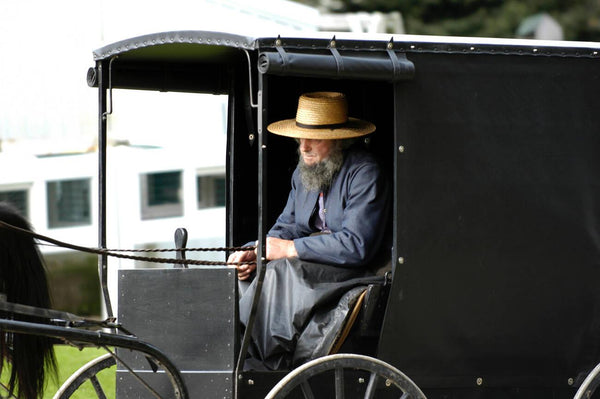
Before we get to the core values of the Amish people, let us take a close look at these terms. How do these differ from their traditions, norms, and customs? Is there a difference, and why does it matter?
Values are the standards by which culture defines what is good or bad. This influences what they’ll deem desirable or undesirable behavior. Norms, on the other hand, are the behaviors, traditions, and customs that arise from those underlying values.
Values cannot be seen, yet their influence on the behaviors within the group can be seen. Therefore, values are the unseen forces that shape identifiable norms. Without these core values giving them meaning, people within the group would question the legitimacy and purpose of these norms.
Now that we have a better understanding of the role of values, what are the core values of the Amish people?
Core Value #1: Belief in God and Faith in His Will
The Amish people’s unwavering faith in God and His Will is not only one of their core values, but it is also the core value. Every other brief of theirs is tied to this, and it is the backbone of their society.
Almost every tradition and custom of the Amish community can be traced, either directly or indirectly, to the Amish religion. It is what created, and what has always sustained, their way of life.
Core Value #2: The Importance of the Family Unit

The importance of the family unit is a value that is second only to their faith in God. Having children is seen as a blessing, and this means that the Amish have large families.
As sex before marriage isn’t allowed due to their religious beliefs, the only way to attain this blessing is through a marriage sanctified by God.
Core Value #3: A Life of Service to the Community
Faith in God and the importance of the family unit, this is the other core value of the Amish people. Amish salvation beliefs also play a role here. While some Amish do profess a belief in salvation through God’s Grace, many believe in salvation through good works.
What this means is that they must live good lives, follow God’s commandments, and obey the rules of their religious community and church.
Rather than doing what is ‘right’ for society at large, all norms in the community have arisen from a need to preserve the culture.
Amish Core Value #4: Simple Living
From their very earliest beginnings, the Amish have lived separately from modern society. This may be misconstrued by non-Amish people as unacceptance of others, but this is not so.
The Amish people are very accepting of every culture, religious system, and ethnic group. That said, they want to preserve their own culture, and serve God in the best way they can.
To do so, it is necessary to live without the temptations and distractions of modern life. And the easiest way to achieve this is through living in their enclosed communities.
Amish Religious Values
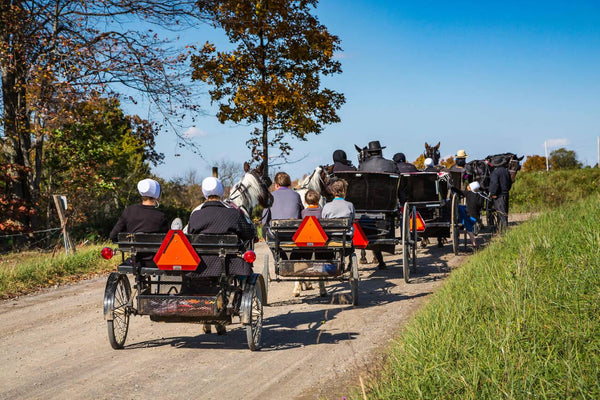
This community is not just a cultural group, but also a religious group. Therefore, religious observance is part and parcel of Amish life. Modesty and humility are major themes in the Bible, especially in the Old Testament.
Amish Religious Norms
- Like in most other Christian denominations, Amish church day is on a Sunday. The church is attended on alternate Sundays. This allows a day of rest on the in-between Sundays.
- Church attendance and the reading of Amish Bible verses are encouraged, but their religious observance does not stop there. Every aspect of Amish life, from birth to death, is subject to this faith.
- Their modest attire, simple lifestyles, and even Amish funeral traditions are all tied to the belief that one must avoid vanity and displays of ego.
- Amish adult baptism is seen as the most important act of their religious lives. The Amish don’t believe in infant baptism, as a child cannot make an informed decision to follow God of their own free will.
- Once someone is baptized into the Amish faith, they’re free to get married and start a family.
Amish Family Values
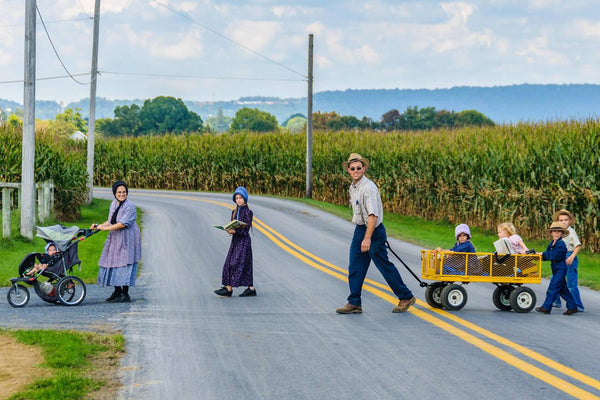
The family hierarchy in any Amish household is patriarchal. The husband and father is the head of the household. The wife and mother is the caregiver. But don’t be alarmed, this is a form of oppression.
Amish Family Norms
- Everyone is viewed as equal in the eyes of God. Hence, even Amish baby dolls have no distinguishing characteristics like facial features. Depicting a face on the doll would run the risk of personifying it; a gamble the Amish are not willing to take.
- This traditional family structure has its roots in the Amish’s strict interpretation of the Bible. However, it is also an established family structure that has been the norm for most of human society since the dawn of time.
- Marriage to outsiders is discouraged, as this can lead to a breakdown of the values and norms of the Amish family. If an outsider agrees to that all-important Amish religion symbol, baptism (and therefore conversion to the Amish faith), then such a marriage may be allowed.
Amish Community Values
Amish people are very supportive of all members of the community. They live together, in seclusion from the rest of society. Hence, they need to do what they can to support the continuation of the community.
Community Norms
- Traditional trades and crafts are practical for a self-sufficient community. They also offer a source of income for each household, as well as the community at large. From one generation to the next, woodworking skills have been handed down from father to son.
- And likewise, the art of basket weaving has been passed to each successive generation of daughters. Everything from adorable rustic wicker Easter baskets to stylish wicker file baskets is made by hand and sold to support their families and community.
- Farming is the main activity in most Amish settlements. Simple tools and traditional methods are used, as opposed to modern mechanized farm implements. It is heartwarming to see Amish farmers gathering their fresh produce in traditional woven harvest baskets made by the community.
Why Do the Amish Separate Themselves from Society?
A large part of the mystery of the Amish people, in the eyes of outsiders, is their seclusion from modern society, but this can be traced back to their value system too.
Avoidance of Temptations to Sin
Life outside Amish settlements contains many exciting technologies and leisure pursuits, but they’re not viewed quite so favorably by the Amish. This is because of their need to avoid sinful temptations, which feed the ego and not the soul. Their separation is a means to spiritual and cultural preservation.
This need to live simple has grown into its own set of Amish norms:
- The banning of electrical appliances is a well-known one. It’s believed that dependence on such devices only opens the door to other temptations, all of which will only distract the Amish from living lives of faith and disobedience to God.
- Their reliance on the horse and buggy instead of cars is another well-known expression of this value system. Motor vehicles can easily become status symbols, leading to the sin of pride. The same can be said of other modern conveniences.
The Exception to the Rule

There’s one exception to this rule that’s known by a few but misunderstood by most who have heard of it. It’s called rumspringa and is the one exception to the rule about avoiding outside influences. However, even this exception is in fact based on the Amish values system.
Because of their belief that one can only truly follow the right path when he or she understands their choice, they introduced adult baptism. This usually takes place at about the age of sixteen, and the newly baptized community member often marries and starts a family soon after.
How Does This Work?
The Amish also believe that to make this decision, the community member needs to know what they are ‘giving up’ to truly appreciate what they’ll be gaining. And so the practice of rumspringa was born. At this time, before baptism, a young person is allowed to go and have a taste of outside life.
Most Amish return to the fold and are baptized after rumspringa. Despite having been exposed to more liberal attitudes and behaviors on the ‘outside’, they usually prefer to join the community and live life the Amish way.
The Exception to the Rule, Protects the Rules
It’s clear that, although at first glance this tradition may conflict with Amish values, it was designed to protect them. All people are given the choice to live according to Amish rules or not.
However, should they choose not to, they would have to leave the community. This is also stipulated in the Amish code of conduct known as the Ordnung.
The Ordnung – Where Amish Values Become Norms
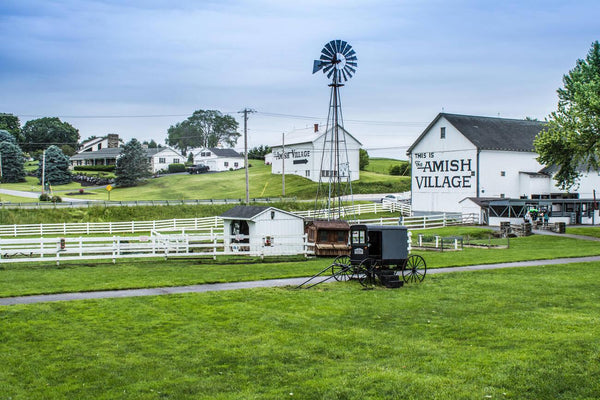
There are numerous Amish settlements throughout the US, and slight differences may be seen between them. But they have a common thread that runs through them all, and that is the Ordnung. This is the book of rules that every Amish person must follow.
Their values can be seen on every page of the Ordning, as their beliefs are the foundation on which the Ordnung was built. It has guided each new generation of Amish people through the trials of life since the first Amish settlers arrived in the 1700s.
The Ordnung provides all Amish community members with a guide for Amish living. It covers topics such as church practices, courtship and marriage rituals, and other aspects of daily life. It contains the rules that they’re expected to adhere to and the transgressions that they are told to avoid.
The Ordnung has existed throughout the Amish people’s history, but it’s not harsh and unyielding. It’s reviewed regularly so that it will always be in line with current Amish beliefs and practices. There has been little variation over time, but small differences exist between Old Order and New Order settlements.
What Are the Old Order Amish and the New Order Amish?
The Amish are one people, with one culture and religious affiliation. Are different settlements across the country, and these belong to either the Old Order or New Order groups. They’re all Amish, descended from the same people. But they do things a little differently.
Old Order Amish are the most conservative of the Amish people and are the first form of Amish culture that was established here in the US. Most of these conservative Amish settlements can be found in Pennsylvania, where the Amish settlers first settled upon their arrival in the US.

The New Order Amish are slightly less conservative than the Old Order, and hence they allow a few more modern concessions. They’re represented in at least a dozen states, with the largest community in Ohio.
Old Order Values vs New Order Values
A distinction must be made here. The difference lies in how the Amish values may be interpreted by these settlements, not in the values themselves. The four core Amish values discussed above have always been in place, across settlements.
So, while the Amish values never differ, the norms associated with them, can. An example is the modest way of dress. All Amish communities dress modestly. The style of the garments is always the same, but some New Order communities may allow more variation in color than the Old Order do.
The use of electrical appliances is forbidden, and that includes conveniences like telephones and televisions. No Amish communities allow these in their homes. Certain settlements may, however, allow a public phone for emergency use. The same applies to cars, although this is far rarer.
The Role of Values in Amish History
The very beginnings of the Amish movement can be attributed to a stance on Amish values. The Amish are named for their leader, Jakob Amman, a Swiss Anabaptist Christian who disagreed with the church on certain issues.
Different Values, Different Norms
Amman believed that the church was too soft when it came to the social shunning of disobedient followers. He also felt that more emphasis had to be placed on regular communion services. These doctrinal differences led to a schism in the Anabaptist movement, and so the Amish community was born.
Due to one Anabaptist elder standing up for what he believed in, a new religious denomination developed. As reconciliation was futile, and the Amish wanted to live their lives without conflict, they chose to emigrate to the ‘New World’ of promise and hope, America.
The Amish in America
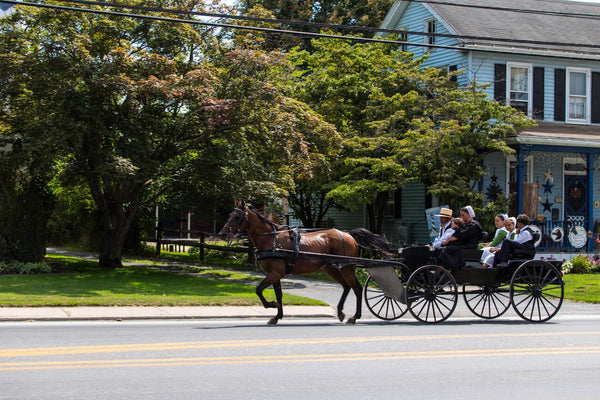
After a few waves of immigration into the US, all Amish followers were now in America. Here they could practice their religious beliefs without the threat of intolerance and the fear of persecution. In time, they became a distinct cultural group, with their own values and norms.
They became the community that we see today, and although a few Amish communities are living in Canada, they do not exist elsewhere. Even in their ancestral European home, there are no Amish settlements. Those that did not follow Jakob Amman to America, became assimilated into neighboring Mennonite groups.
The Amish are as much a part of the fabric of American society as any other group who fled to the US looking for a better life. Their values are similar to those of most other groups in the world today. It is only in the way these values translate into their cultural norms, that we see any differences.
Conclusion
The Amish people are dedicated to living righteous life according to God’s Will. This is the basic tenet of the Amish way of life. And it has been the guiding principle since their establishment as a people.
When one wants to understand the cultural practices of any group, it helps to learn about their underlying values. You may be surprised by what commonalities you discover.
The Amish, like most traditional cultural groups, live their lives devoted to God, family, and community. And despite any differences in our cultural norms, those are values that we can all agree with.
Did You Find Our Blog Helpful? Then Consider Checking:


